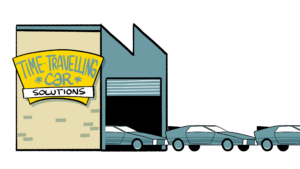Do people feel out of their depth as soon as you start talking about what you do? Deep tech communication is about explaining why they are not.
By focusing on the connection between your work and their wants and needs, you create a mental bridge to channel understanding.
Back in the 80s, when pixelated graphics were not a style, but the only way to view an image on a screen, you needed to know what command to type to launch a computer programme.
We’ve come a long way since then. Today, technology is everywhere, or rather, beneath everything. Smart technology underpins most aspects of our lives – sometimes we hardly notice it’s there. (Ever left the faucet running in a public toilet because you were so used to the sensor-operated ones switching off automatically?)
And the more user-friendly it is on the outside, the more sophisticated it’s likely to be on the inside.
And the deeper the tech, the loftier the opportunities it may offer. Just a few years ago, the focus of innovation was mostly on inventing tools to save us time and effort (think faster transport); today, technology may autonomously detect the problem it then sets out to solve (think AI-assisted diagnostics). Innovation can consist in a roadmap for solving complex global challenges, even if the technology is not ready to hit the market.
This is amazing – but how do you pitch technology that solves hypothetical problems to investors, or hypothetical technology that solves actual ones ? It’s a tougher sell than straightforward capacity gains.

Getting your deep tech communication right is all about bringing these perspectives to life.
The seemingly arcane knowledge at the heart of technology has an impact on the real world, making a difference in everyday life for people like you and me.
Making this link obvious is the key to making your complex work accessible to the audiences you need to connect with – investors, customers, end users, journalists, recruiters, or collaborators.
This approach works for deep tech communication, but it provides a basic blueprint for virtually anyone and any organisations working with technology. Whether you are working in fintech, ed tech, HR tech, or in a brick-and-mortar business going digital – pitch technology-enabled outcomes, not technology.
Let’s break down what your (deep) tech communication will look like in practice, depending on your individual goals and challenges.
Contents

What is deep tech?
Deep tech is technology based on substantial scientific or engineering advances and disruptive innovation.
By extension, the term is used to describe a class of organisation whose business focuses on providing products and services based on this type of technology – typically startups or scaleups.
What sets these companies apart from other technology companies? According to Swati Chaturvedi, the founder of the Propel(x) platform dedicated to angel investing in deep tech startups, it’s both how and why they innovate.
As she explains in her article, deep tech startups are trying to solve big issues affecting the world around them using groundbreaking technological advances, rather than applying business model innovation to existing technology. Sharing economy companies such as AirBnB are a typical example of the latter.
Famous examples of deep tech startups include for instance German biotechnology success story BioNTech and UK satellite internet company OneWeb.
For deep tech communication, this combination of why and how is key. When reaching out to audiences such as potential investors or clients, it’s essential to get across not only what the big technological advance is, but also which big issue it solves.
Of course, this applies not only to startups and scaleups pitching their product or service. Large companies with technology departments, smaller ones buying the technology elsewhere, or consultants and recruiters working with technology professionals can all benefit from the same communication strategy.

Deep tech communication: surprisingly simple solutions to common challenges
Know thy challenges: recognising an issue is the first step toward tackling it. If your work revolves around deep tech, communication efforts are likely to face a set of common problems. We have successfully tried the solutions suggested for tackling each of them.
Challenge: making expert knowledge understood to a non-expert public.
Working on technology involves scientific expertise shared only by others working in the same field. How can you explain to your target audience what’s new and different about your work without going into the details of things that are difficult to grasp?
Solution: make it visual. Visual content helps understanding and memorisation and can make highly technical context accessible – and interesting! – to broad audiences without prior knowledge of the topic.
By turning abstract concepts into concrete representations, visuals can bring the science driving innovation to life and make the relationship between technology and solution visible.
Practical tip: Chinese whispers with a visual twist
Here’s an idea to field-test this approach with minimal investment next time you need to check if a technical explanation works for a non-technical audience.
Provide your explanation over the phone to a non-expert and have them draw what you explain. Then use their drawing to explain it to someone else.
If they get it, that means you’ll have built a mini-communication kit combining visuals and clear wording to get your explanation across.
At Cartoonbase, we team up illustrators with content experts to create visual explainers.
Challenge: explaining why your audience should care about what you do.
You do important work, but it’s complex. Target audiences are always in a hurry, and many brands and businesses are competing for their attention. How do you get their attention – and hold it for long enough to get your message across?
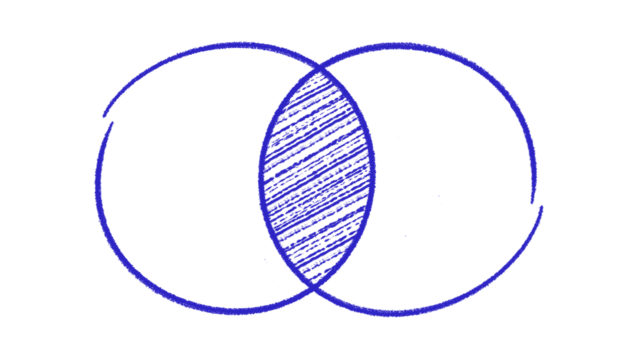
Solution: focus on what’s in it for them. They have no reason to care (unless you happen to be personally acquainted) – so give them something useful. This can be a concrete impact of your technology on their life, work, or its contribution to a cause they care about. (No doubt your technology is making the world a better place – say so, and show how.)
Afore-mentioned biotech startup BioNTech is a case in point here – just two years ago, only a tiny minority of people would have known or cared about mRNA immunotherapy. Today, most of us do not only have a basic understanding of how it works, but also strong opinions about it. Because it impacts us directly.
Arguably, the company behind one of the major Covid vaccines didn’t even need a communication campaign. In other cases, the potential impact may be less obvious from where we stand today. In those cases, being useful will require illustrating that impact: for instance, to fully appreciate the potential of lab-grown meat, potential customers need to appreciate how much it looks, tastes and smells like the real deal.
Of course, you can also be useful to audiences in a very short-term and immediate sense – if your deep tech communication content is entertaining, surprising, revealing some amazing fact or simply making them feel something, you’ll have made it worth their while. Often, the simplest way to trigger an emotional reaction is to tell your audience a story: yours, or theirs.
Consider video – it’s a great tool for telling compelling stories about how deep tech can bring deep changes.
- Get inspired: telling science stories with visuals
- Tips for scripting a video your customers will actually watch
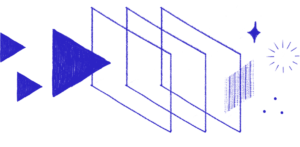
Challenge: steering clear of technocratic discourse.
It’s not just about helping the technophobes come round. Many people are wary of businesses outlining a vision for the future where our lives are fully automated, jobs taken over by machines, and the thinking done by AI. It’s important to show that this is not what deep tech is about.
Solution: keep it human. At the core, technology of any kind is about people. It’s made by humans for humans, we shape it in our image and tailor it to our needs.
Tell human stories enabled by technology to highlight that there’s no contradiction between the two – on the contrary.
Inspiration: Secret Lovers Code 2.0: secrets, love and cryptography
Alice and Bob are in love. They are also well-known placeholder characters traditionally used in discussions about cryptography.
To explain to a broad audience how encryption algorithms work, we featured alice and Bob as the protagonists of a story about two young lovers keen to protect the privacy of their secret messages.
Their story has been viewed over a million times on YouTube.

Challenge: selling something that doesn’t exist yet.
You may need to reach out to investors with no product or service to show. In other cases, you have a product that evolves fast thanks to the brilliant work of your research team. How do you pitch something that’s work in progress?
Solution: sell your vision by making it tangible. What you are really pitching is not the technology, but what we can do with it. (Well, the technology needs to be sound if you don’t want to go down the same road as Elizabeth Holmes and her deep tech startup Theranos). The point is: what people will invest in, buy, or share, is a vision of change. Build momentum around this vision to bring your audiences on board.
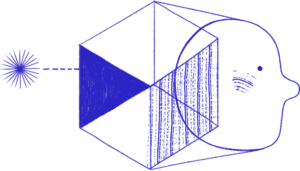
Sharing your vision is one thing – but how do you make it feel real, relevant, and achievable? Take concrete steps to ensure you build the right mental representation, by testing and adjusting as you go.
To understand why this matters, imagine for instance asking someone to picture a piece of furniture. If they had to describe the mental image they have come up with, it would likely be somewhat vague. Ask them to imagine a table: the mental image is becoming more specific. Now ask them to imagine a ping-pong table, and the picture in their mind will be crystal-clear.
It’s no different when communicating how your work, technology or project might reshape reality – depict a concrete vision that can be broadly shared by diverse audiences.
Case study
A clear vision to herald change at Solvay
Solvay introduced a new way of working. We helped them develop a vision that everyone involved in the process could relate to.
The results are as concrete as the vision we worked towards together. A workshop with Solvay where we jointly developed their narrative led to the development of an HR software, which in turn enabled the creation of a successful carve-out company (Huapii).

The three key questions about deep tech your communication needs to answer
Communication is always goal-dependent: if you work in recruitment, you would probably address candidates and recruiters with different messages.
Inspiration: how IT recruitment platform nexten speaks to their geeky user base
In deep tech communication, your goals will often depend on the development stage of your technology. Are you seeking funding? Developing partnerships to take a prototype to the market? Or are you looking to grow your customer base?
Whatever the readiness level of ‘your’ tech, there are a few basics that you will always need to address.
These are the three key questions you need to answer.
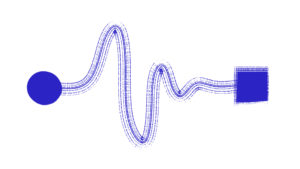
How does it work?
We’ve established that connecting with audiences requires common ground: if your vision resonates with them, if your offering fits their needs, you will have their ear.
But there’s no way around explaining how it all works. Laying out how your technology functions in terms a broader public can understand is key to establishing credibility and being relevant.
Our solution: explaining complex concepts by helping audiences connect
Connecting is the key to unravelling complexity. It can be a headache to communicate on abstract or technical topics: how to get the message across without being boring? How to put it simply without dumbing it down?
To explain complex concepts to large, non-expert audiences, we need to help them connect – emotionally, and visually. Explainer videos are a great tool for doing just that: by combining a clear narrative with imaginative visuals, they help bring your content to life to make it understood.
Discover how to explain complex concepts so even your grandma can understand them

Where are you headed?
Whether or not your product is already on the market or still in the lab: give your audiences a clear idea of what the state of play is – and what your plans are.
This is, of course, closely intertwined with the vision you will be outlining: even if you are setting out the basic scientific concepts underpinning the research you are conducting, it’s important to give your public a clear idea of the next steps. This can encompass the potential next steps of technological evolution; concrete applications in the pipeline; how this will generate value for those you are talking to; and how it could contribute to improving lives.
Case study: putting quantum computing in context
Client: Pasqal
The French deep tech startup Pasqal wanted to reach out to investors to take their technology to the next level.
Quantum physics can be hard to grasp for the layman, and Pasqal needed to address a broad public interested in potential concrete applications.
We helped them create a video breaking down the highly technical content into very clear, simple visuals making quantum computing accessible to virtually anyone. With this information as the basis, we were then able to show how the basic physics at play enable practical solutions that are good for the environment.
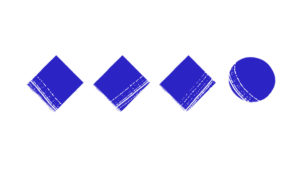
What sets you apart?
You may be doing groundbreaking work, but so are other companies. To the layman, the difference between the particular algorithms, platform or app you work on and your competitors’ projects might not be obvious.
Standing out from the crowd will not just involve clarifying the unique features of your (future) product. Your brand identity will be key in establishing your vision.
Case study: It’s not science fiction, it’s synthetic biology
Client: BCG
Bacteria that turn into building bricks. Nylon stockings created through fermentation. Synthetic biology sounds pretty abstract, but the things we can do with it (or will soon be able to) are very real. And they’re good for the planet, too.
For our client BCG, we created a video about the opportunities offered by this groundbreaking technology. In addition to linking concrete applications with abstract scientific notions, the video outlines a responsible vision for using synbio – and appeals to businesses to start acting now to play a role in implementing it.
Secret extra: How Doc Brown transformed time travel

Doc made an amazing discovery, but it wasn’t going to be easy to explain how it works. So, he asked himself 3 key questions:
How does it work?
What sets me apart from my competitors?
Where am I headed?
How: Of course, Doc knew how tech worked, but could he explain it correctly? As his buddy Albert once said: “If you can’t explain it simply, you don’t understand it well enough”.
So he wrote down what he knew:
“I use a flux capacitor, a device that can convert speed into time dilation (that’s what we call ‘time travel’). If I can get my little hatchback to move at 144km/h, then it’ll be enough to shoot me forwards to the futuristic year of 2022. Speed affects spacetime after all”.
Now he’s able to captivate the masses with a clear narrative.
What: His time-travel solution just uses a single piece of radioactive waste, instead of the mountains of uranium that his competitors use. Finally, an ecological way to meet your great grandparents.
Doc’s branding game was off the charts too: while other time machines looked like phone booths and hot tubs, his took the guise of a sleek Delorean.
Where: Doc knew where he was headed, envisioning constant development with a flying version in under 5 years – ambitious, but where he was going, he wouldn’t need roads.
By making sure he knew who he was and what he had to offer, his company was able to become the world’s largest manufacturer of time-travelling car solutions.
Looking for help with deep tech communication?
Feel free to download our Technograms: a free set of pictograms and illustrations to bring your tech presentations to the next level!

